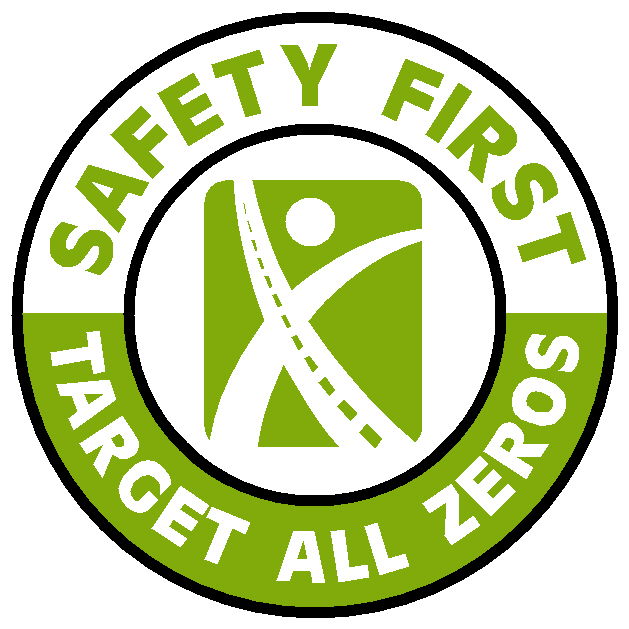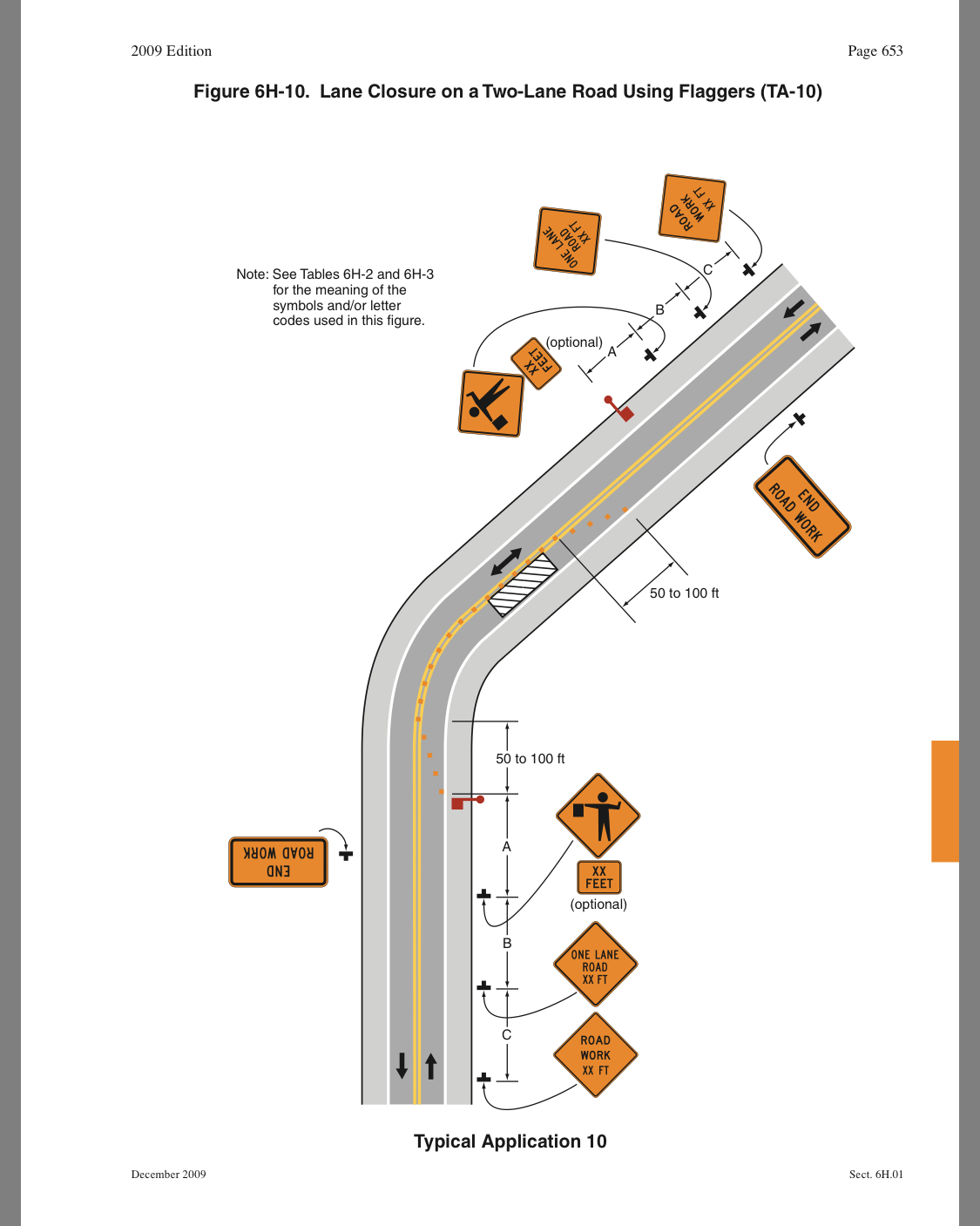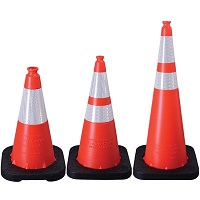Title Page
-
Site Name
-
Date and Time of Inspection
-
Project Number
-
Competent Person
-
Inspected by
-
Location
Checklist
GENERAL INFORMATION
-
Project description
-
Take a photo of the project
-
Type of Roadway
-
Posted Speed Limit
-
Weather/Light Conditions
-
Traffic Conditions
TEMPORARY TRAFFIC CONTROL
ADVANCE WARNING SIGNS
-
Reference: MUTCD TA-10 or State Standards
Notes for Figure 6H-10 – Typical Application 10
Lane Closure on Two-Lane Road Using Flaggers
Option:
1. For low-volume situations with short work zones on straight roadways where the flagger is
visible to road users approaching from both directions, a single flagger, positioned to be
visible to road users approaching from both directions, may be used (see Chapter 6E).
2. The ROAD WORK AHEAD and the END ROAD WORK signs may be omitted for shortduration
operations.
3. Flashing warning lights and/or flags may be used to call attention to the advance warning
signs. A BE PREPARED TO STOP sign may be added to the sign series.
4. A flagger or a law enforcement officer may be used at the highway-rail grade crossing to
minimize the probability that vehicles are stopped within 4.5 m (15 ft) of the highway-rail
grade crossing, measured from both sides of the outside rails.
Guidance:
5. Channelizing devices should be extended to a point where they are visible to
approaching road users.
6. Floodlights should be provided as needed to mark flagger stations at night.
7. When used, the BE PREPARED TO STOP sign should be located between the
Advance Flagger sign and the ONE LANE ROAD sign.
8. When a highway-rail grade crossing exists within or upstream of the transition area
and it is anticipated that backups resulting from the lane closure might extend
through the highway-rail grade crossing, the temporary traffic control zone should be
extended so that the transition area precedes the highway-rail grade crossing.
9. When a highway-rail grade crossing equipped with active warning devices exists
within the activity area, provisions should be made for keeping flaggers informed as
to the activation status of these warning devices.
10. When a highway-rail grade crossing exists within the activity area, drivers operating
on the left side of the normal centerline should be provided with comparable warning
devices as for drivers operating on the right side of the normal centerline.
11. Early coordination with the railroad company should occur before work starts.
December, 2000 Page 6H-24
Sect. 6H.01 -
Is there an appropriate number of signs placed?
-
Are all signs in good condition (clean, legible, and reflective)?
CHANNELIZING DEVICES
-
Do all sign placements (height, visibility, and spacing) conform to MUTCD standard regulation?
-
Are all safety cones in good condition?
-
REFERENCE: Safety cones in good condition - Acceptable These are examples of acceptable cones. They may be new or in new
condition. Surfaces are free of punctures and abrasions, and the color is bright. The
surfaces may be dirty, but will readily respond to washing. -
Are all vertical panels in good condition?
-
Are all warning lights in good condition?
-
Do all channelizing devices have appropriate appropriate ballasting?
-
Do all channelizing devices have adequate spacing?
-
Do all channelizing devices have adequate taper length?
-
Is the number of devices placed appropriately?
FLAGGING
-
Are all flaggers trained/certified?
-
Is there an escape route established for flaggers?
-
Are the flagger stations preceded by advance warning signs?
-
Are flaggers clearly visible to approaching traffic?
-
Are the flagger stations illuminated? (Night time)
-
Are there signaling devices provided for flaggers?
-
Are there portable radios issued for flaggers?
-
Do all flaggers wear appropriate PPE - Hard hat - Safety Glasses - Safety Toe Boots?
-
Do all flaggers wear Class III high visibility vests?
TRAFFIC CONTROL PLAN
-
Is there equipment or materials parked in the buffer space?
-
Are there parking areas designated for workers ?
-
Are the areas around specific pieces of equipment and operations delineated?
-
Are there designated locations for storing materials and servicing equipment?
-
Is there an adequate lighting provided for night operations?
-
Is there established communication between RoadSafe workers and contractor(s) on designated operation areas?
COMPLETION
-
Overall recommendations
-
Overall assessment
-
Name and Signature of Inspector
-
Name and Signature of Competent Person
-









